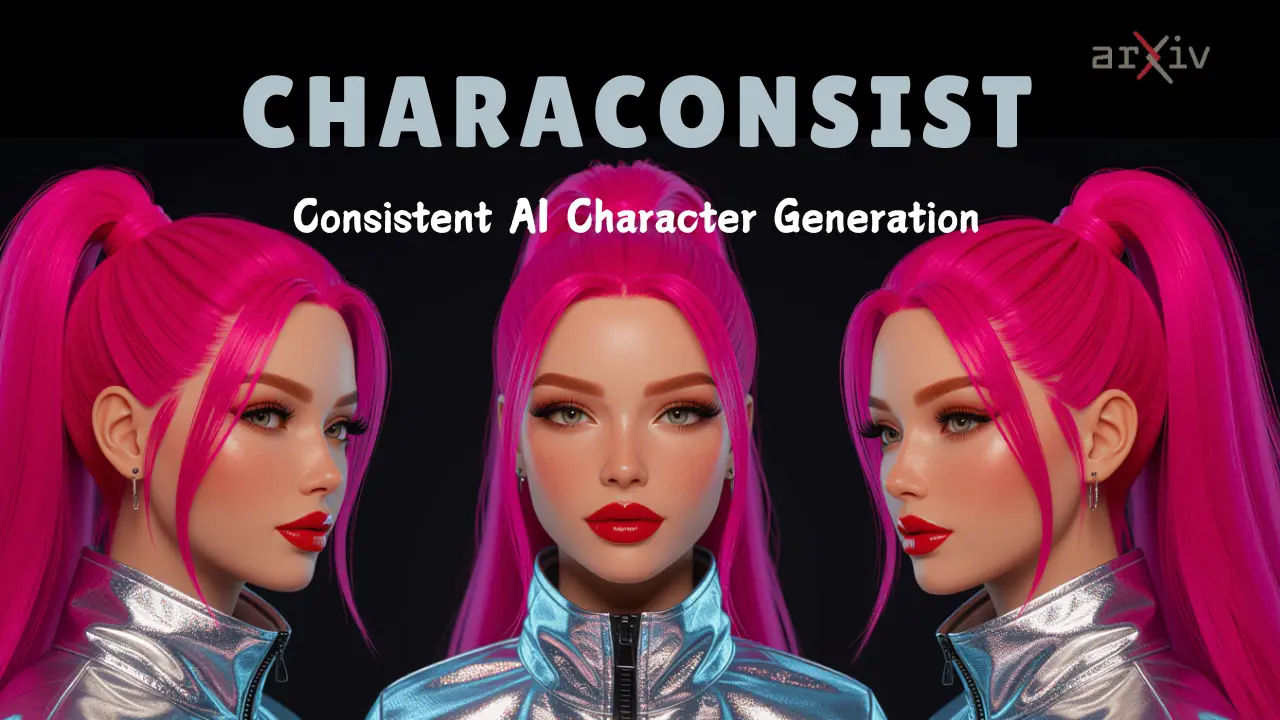Pixel3DMM: Reconstructing 3D Faces from 2D Images
Table of Contents
1. Introduction to Pixel3DMM
In the field of computer vision and graphics, reconstructing 3D models from 2D images has long been a complex and captivating challenge. The recent paper "Pixel3DMM: Versatile Screen-Space Priors for Single-Image 3D Face Reconstruction" by Simon Giebenhain and colleagues introduces a significant advancement in this domain. This work leverages a fine-tuned DINO Vision Transformer (ViT) to predict per-pixel surface normals and UV coordinates—key elements for precise 3D face reconstruction. Aiming to solve the inherently difficult problem of modeling human faces from a single RGB image, Pixel3DMM has practical implications across virtual reality, gaming, and facial recognition.
By employing highly generalized vision transformers, the framework not only boosts the accuracy of 3D morphable models (3DMMs) but also establishes a new benchmark for evaluating single-image reconstruction methods. The official implementation is available on Pixel3DMM GitHub, offering insight into one of the most promising directions in modern face modeling.
2. Methodology Behind Pixel3DMM
![]()
Pixel3DMM introduces a powerful and well-structured approach to 3D face reconstruction. Here's a quick breakdown of what makes it stand out:
-
DINO Backbone for Feature Extraction
Utilizes a self-supervised DINO model to extract rich, latent features from facial images. -
Specialized Prediction Head
Tailored specifically for estimating surface normals and UV coordinates—crucial for accurate 3D geometry. -
Multi-Dataset Training
Trained on NPHM, FaceScape, and Ava256 datasets, covering 1,000+ identities and nearly a million images. -
FLAME Mesh Registration
Aligns all training data with the FLAME mesh topology to maintain consistency across facial structures. -
Refined 3DMM Optimization
Leverages predicted UV maps and surface normals to optimize and refine 3D morphable model parameters with high precision.
By combining deep self-supervised learning with geometry-aware predictions, Pixel3DMM achieves remarkably accurate and realistic 3D face reconstructions—pushing the boundaries of what's possible in facial modeling.
3. Performance Evaluation and Benchmarking
To assess the effectiveness of Pixel3DMM, the authors introduce a new benchmark specifically designed for single-image face reconstruction. This benchmark is unique in that it evaluates both posed and neutral facial geometries, providing a comprehensive assessment of the model's capabilities. The results are impressive, with Pixel3DMM outperforming existing state-of-the-art methods by over 15% in terms of geometric accuracy for posed facial expressions.
The benchmark features a diverse set of facial expressions, viewing angles, and ethnicities, which is crucial for ensuring that the model is robust and generalizable across different scenarios. The following table summarizes the performance of Pixel3DMM compared to other leading methods in the field:
| Method | Geometric Accuracy (%) | Notes |
|---|---|---|
| Pixel3DMM | 85 | Best performance for posed expressions |
| DECA | 70 | Good for neutral expressions |
| FlowFace | 68 | Lacks code release |
| MetricalTracker | 65 | Multi-view tracking support |
This table highlights the significant advancements made by Pixel3DMM, showcasing its potential to set new standards in 3D face reconstruction.
4. Real-World Impact and Future Potential of Pixel3DMM
Pixel3DMM isn’t just a research milestone — it has wide-reaching implications across industries and future technologies. Here's how:
![]()
Real-World Applications
-
Entertainment & Media: Enhances character modeling in games and animation, enabling lifelike digital humans.
-
VR/AR Experiences: Reconstructs faces from single images to power realistic, expression-aware avatars in immersive environments.
-
Security & Authentication: Improves the accuracy of facial recognition systems, strengthening user verification and safety.
Future Directions
-
Multimodal Fusion: Combining Pixel3DMM with audio and motion data could enable deeper, more dynamic modeling of human behavior.
-
Inclusive AI: Expanding training datasets to include more diverse demographics will boost fairness, robustness, and global applicability.
Pixel3DMM is poised to transform how we interact with digital spaces—by making avatars more human, systems more secure, and models more inclusive.
5. Conclusion and Final Thoughts
In summary, Pixel3DMM marks a substantial advancement in single-image 3D face reconstruction. By combining powerful vision transformers with a carefully designed training pipeline, the authors have created a model that delivers high geometric fidelity and establishes a new standard for evaluating reconstruction methods. With potential applications spanning entertainment, virtual reality, and security, the impact of this work extends well beyond academic research. As computer vision continues to push forward, innovations like Pixel3DMM will be central to how we model, understand, and interact with human faces in digital spaces. To explore the full details, you can read the Pixel3DMM paper on arXiv here, where the authors welcome feedback and engagement from the research community.



